Make pickles at home with just a few simple ingredients and only 5 minutes of prep work. Like most things, they are so much better homemade! And don’t feel intimidated. Making pickles is easier than you think!
For more pickled recipes, try our Pickled Jalapeños and our Pickled Red Onions.

Why My Recipe
- Quick prep time and ready overnight.
- Made with English cucumbers for the perfect crunch!
- Fresh dill brings out that punchy, pickled flavor everyone loves.
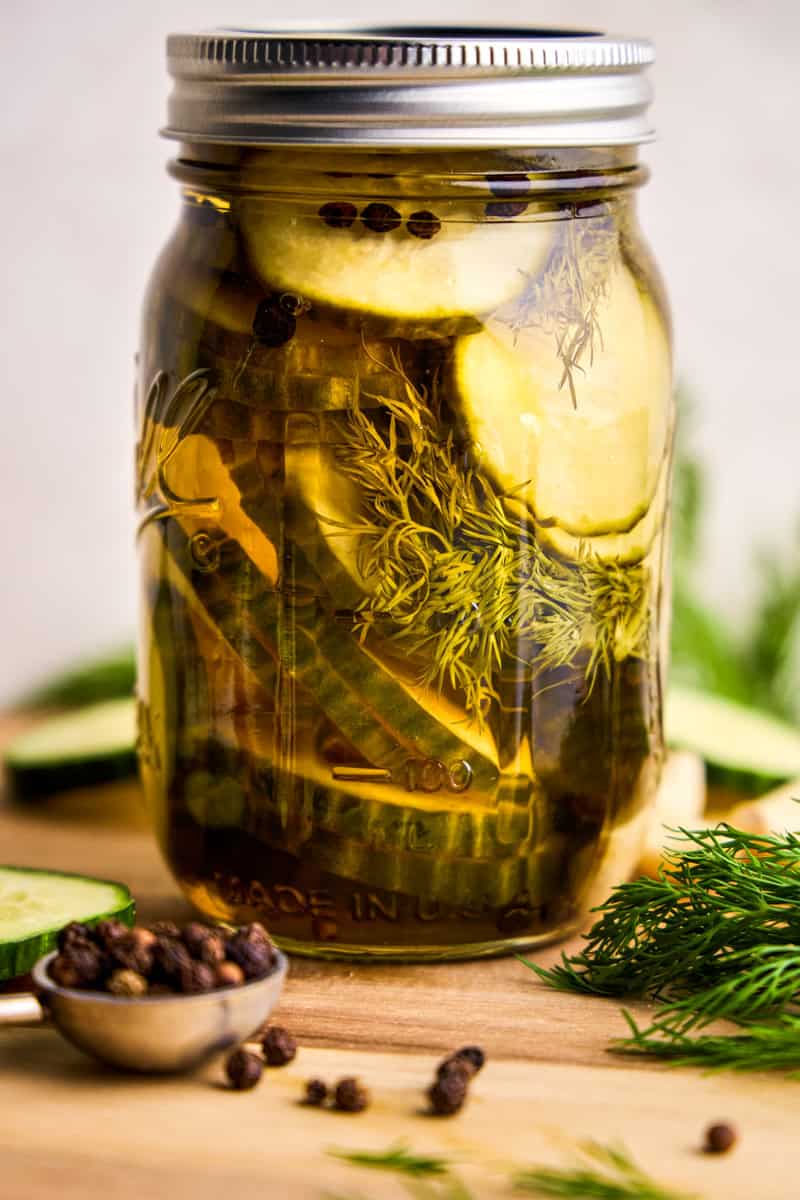
Pickles date back thousands of years, when pickling was the best way to preserve food. You might immediately think of cucumbers when talking about pickles, but practically any vegetable can be pickled! Plus, this overnight recipe is so simple that you’ll never reach for a store-bought jar again!
Ingredient Notes
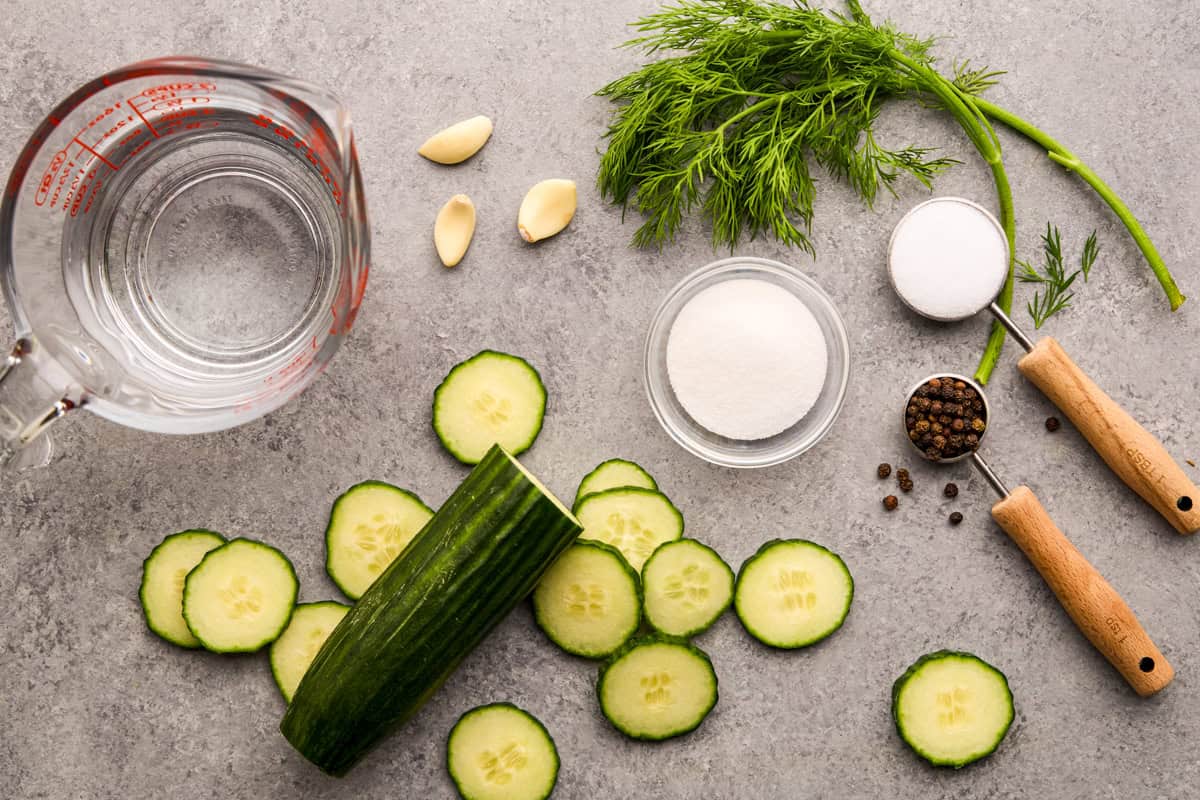
- English Cucumber: Has a milder flavor and fewer seeds than regular cucumbers, but both can be used.
- Garlic: Peel the garlic cloves and add them whole. You can find packed pre-peeled garlic gloves at most grocery stores.
- Fresh Dill: Strongly preferred for this recipe. If you can’t find fresh dill or don’t have access, you can use 2 to 3 teaspoons of dried dill.
- White Distilled Vinegar: Has a neutral flavor, so your spice blend can shine.
- Granulated Sugar: Sugar adds balance to the vinegar and spices.
- Salt: You can use your standard table salt, sea salt, or pink Himalayan salt. Although you’ll want a fine grain that dissolves well.
Cucumber Options
Pickling Cucumbers are tailor-made to pickle. While they can be eaten fresh from the garden, their thin skin and extra crunchy flesh make them ideal for pickling. You may have a difficult time finding this in-store.
Regular Cucumbers are the standard cucumbers you see at the grocery store that are short and wide and may even have a waxy coating on them to make them look good on the shelves. These have larger seeds and a higher water content.
English Cucumbers are often covered in plastic wrap to better preserve them on the shelves since they do not have a wax coating. They have a sweeter taste, and while they still have seeds, they are tiny with a much lower water content, making them perfect for refrigerator pickles!
Bread and Butter Pickles
Love Bread and Butter pickles? No problem! It’s easy to alter this dill pickle recipe to the bread and butter variety. Simply replace 1/2 cup of the white vinegar with apple cider vinegar. Then, instead of adding in black peppercorns, garlic, and dill you’ll flavor the pickles with:
- 1 inch cinnamon stick
- 1 teaspoon whole mustard seeds
- 6 allspice berries
- 6 whole cloves
- 1/2 teaspoon ground turmeric
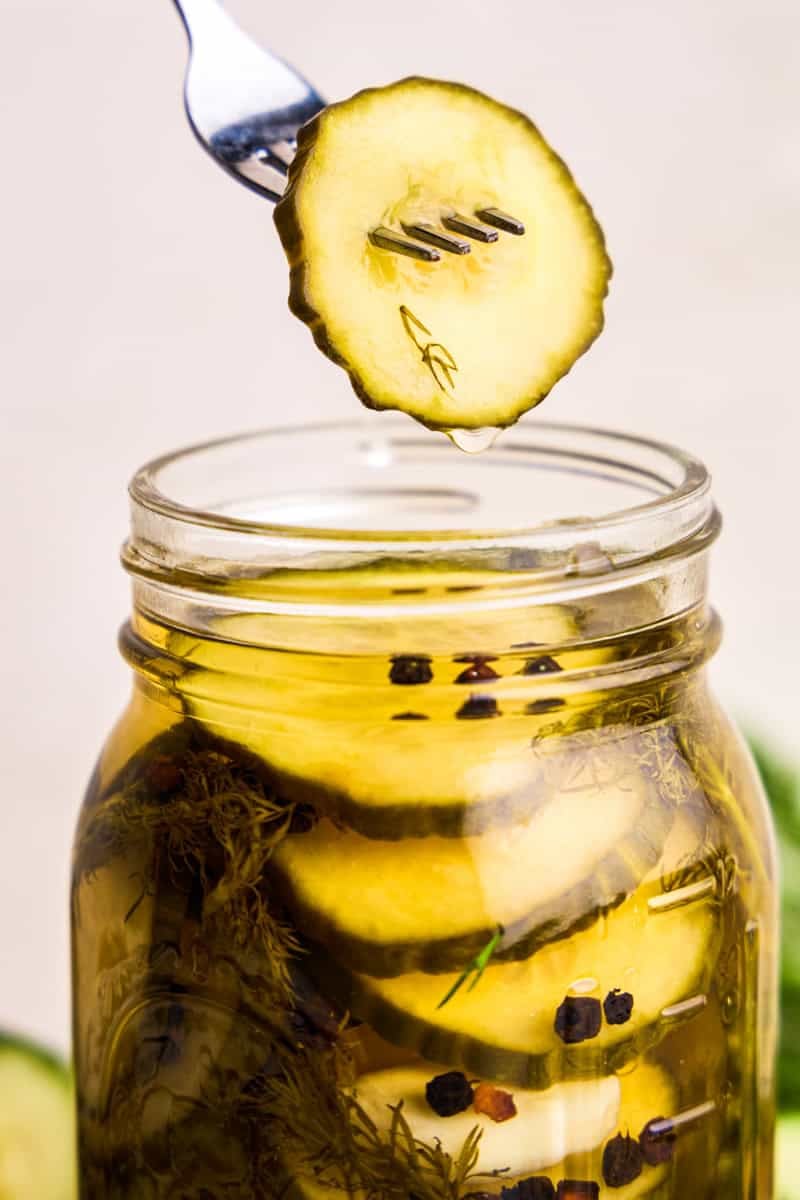
The Role of Sugar
While it is true that you can do without sugar in the sense of food safety, we don’t recommend it. When used in pickling, sugar helps to preserve the texture as well as balance out the tartness in this level of acidity.
If you’re looking to replace sugar, there are several options you could try:
- Honey: A natural sweetener; use a slightly lesser amount since it’s sweeter than sugar.
- Agave Syrup: Another natural alternative, similar to honey in sweetness.
- Artificial Sweeteners: Such as Stevia or Splenda. Be mindful that these can sometimes leave a different aftertaste and may not preserve the texture as well as sugar.
Canning Instructions
If you want to can your pickles, you may want to make a much larger batch.
Fill sterilized pint-sized canning jars with pickles and brine, leaving a 1/2 inch of headspace. Be sure to wipe the rim clean and seal with a canning lid and ring. Do not overtighten. Place into a large stockpot for canning. Fill the pot to cover the tops of the jars with at least 1 inch of water and process in a water bath for 15 minutes (higher elevations and/or larger jars will need a longer processing time).
Carefully remove the jars from the water bath and let sit out on the counter undisturbed for 24 hours. You should hear a ping from each jar as they seal. After 24 hours, check to make sure the jars have sealed correctly by lightly pressing the top of the lid. If the center bubbles up and down when you press it, is has not sealed and needs to either be refrigerated or reprocessed. If the lid is firm, the jar is properly sealed and can be stored in the pantry.
Storage Instructions
Refrigerate jarred pickles for up to 6 months.
Store unopened in a cool, dark place for up to 1 year.

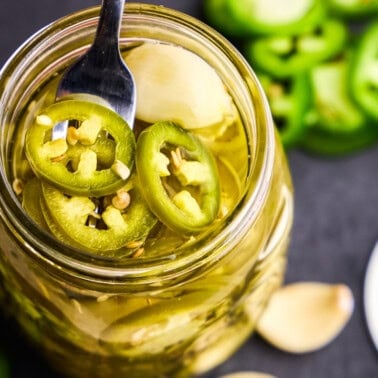
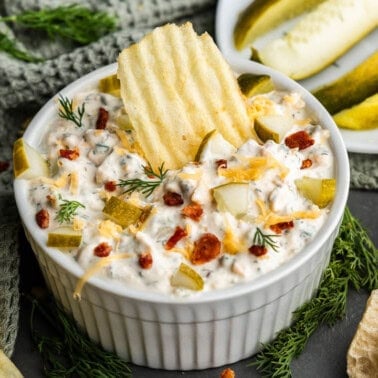
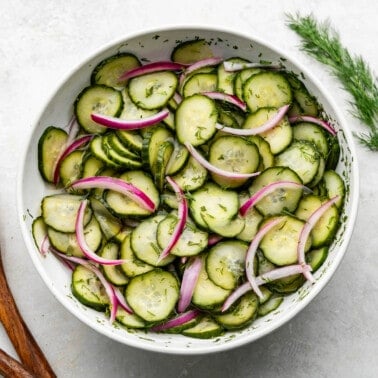
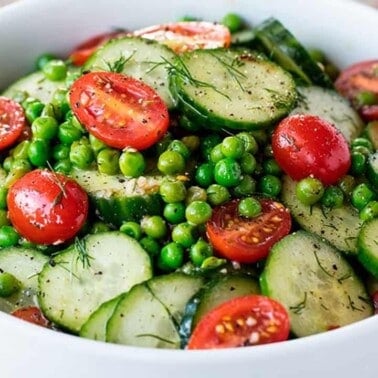
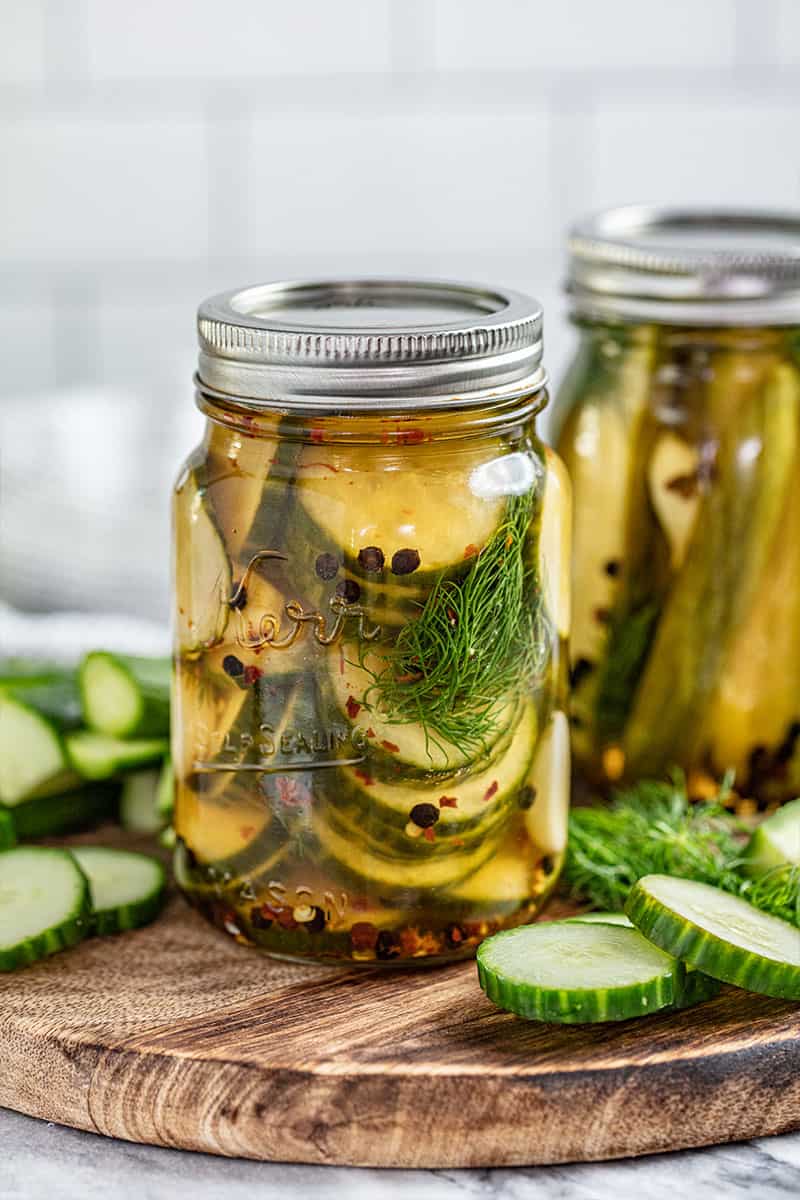
I have made these pickles several times! They are easy to make and are very good! A must try!
Love to hear it! Thanks for taking the time to come back and leave a review.
I made exactly. Little to no taste, very crunchy but no flavor.
I added more dill letting them sit longer in refrigerator.
Been two weeks now and still not much flavor.
Oh that’s so odd! It’s really hard to have any vegetable sit in pickling liquid and have it come out with no flavor. The vinegar alone is so pungent! Are you sure you used vinegar and not water? That’s the only thing I can think of that would have caused those results.
How long will these pickles last in fridge
You can refrigerate jarred pickles for up to 6 months, but I doubt they’ll last that long before being eaten.
I made these pickles yesterday. It took less than 15 minutes. I tried them this morning and pronounced them DELICIOUS!! It was SO easy!
Woot woot! It’s way too easy to keep them on hand!
I’ve made these maybe around 6 times. I’ve changed to using Apple Cider Vinegar. I found I like it better than white vinegar. I was out of white vinegar. These pickles don’t last long in my house. They get eaten rather quickly. Thanks for the recipe.
Love the substitution! I actually just made a jar for the 4th of July with apple cider vinegar myself as I was out of white too!
Question…. can you leave out the sugar? My husband hates sweet pickles, but like dill.
You can reduce the sugar, or leave it out altogether, but, but it’ll impact the flavor. These aren’t sweet pickles like bread and butter so you might be okay.
My first time making bread & butter pickles, shouldn’t the the sugar be increased quite a bit instead of using 2 tablespoons as in the dill pickle recipe? It is not very sweet with only 2 tablespoons of sugar added, maybe I missed something in the instructions.
You could certainly increase the amount of sugar if you like your bread and butter pickles sweeter. The sweet flavor we associate with bread and butter is in the warm spices you add into the bottle. Delicious! But always feel free to make a small adjustment to best suit your own personal style.
What size mason jars should I use for these pickles?
Pint-sized is ideal.
My garden was bursting at the scene with English cucumbers that I needed to do something with when I came across this recipe. I tripled the recipe X 2; one being made exactly as written & the other using less vinegar, substituting water. I also added dill weed in addition to the dill sprigs. Have to admit I was a tad worried when cooking the vinegar solution. My eyes were burning from the fumes & the smell reminded me of…well, if an old smelly teenage boy’s sneakers that he wore with no socks during gym class the entire school year had a scent, this would be it. I used to can pickles decades ago & never had this experience. So, after sitting a few days in the fridge I just opened the full strength one….sooo good. Brought me back to childhood and stopping by a Jewish deli in New York City with my grandmother. I loved the dill pickles that were kept in the wooden barrels. To me it set the stage to appropriate pickledom. These refrigerator pickles taste like that. Happy dance!
This is by far the best pickle recipe I’ve found! I’ve tried so many that have claimed to be the best and have been disappointed so many times. This is definitely one I’ll make over and over again ❤️